Nominated innovations
1000 innovative clean energy solutions and > 150 framework enablers with the potential to deliver more than twelve gigatonnes of avoided emissions by 2030
These assessments are based on a basic avoided emission assessment. The overall concept of avoided emissions is that a solution (product or service) enables the same function to be performed with significantly less GHG emissions. The method of measuring avoided emissions, is to compare a baseline scenario without the enabling solution, with a scenario using the enabling solution; whereby the baseline represents the ‘business as usual’ (BAU) scenario.
These assessments are based on the framework document: The Avoided Emissions Framework (AEF) from September 2020
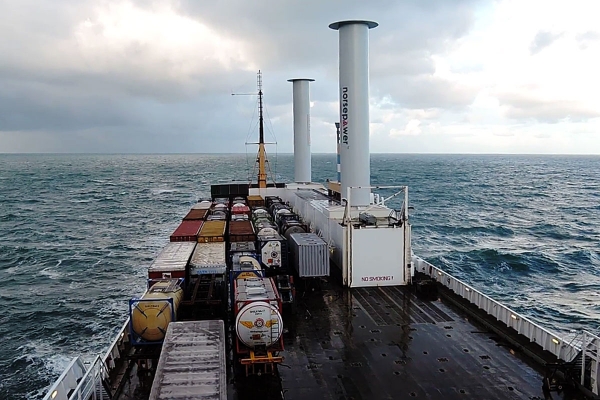
Spinning cylinder for wind power of vessels
Windjammers were a class of sailing vessels built from the 1870s to 1900. As engine technology developed, they were slowly phased out and replaced by steamships which were faster and could stay on schedule regardless of wind conditions. The idea behind Norsepower’s Rotor Sail Solution is to develop a spinning cylinder that harnesses wind power to generate the thrust needed to propel modern vessels. When conditions are favorable, the Norsepower Rotor Sails allow the main engines to be throttled back, saving fuel and reducing emissions while providing the power needed to maintain speed and voyage time.
Finland
≈10

Norsepower
Spinning cylinder for wind power of vessels
Windjammers were a class of sailing vessels built from the 1870s to 1900. As engine technology developed, they were slowly phased out and replaced by steamships which were faster and could stay on schedule regardless of wind conditions. The idea behind Norsepower’s Rotor Sail Solution is to develop a spinning cylinder that harnesses wind power to generate the thrust needed to propel modern vessels. When conditions are favorable, the Norsepower Rotor Sails allow the main engines to be throttled back, saving fuel and reducing emissions while providing the power needed to maintain speed and voyage time.
≈10Mt CO2e/year
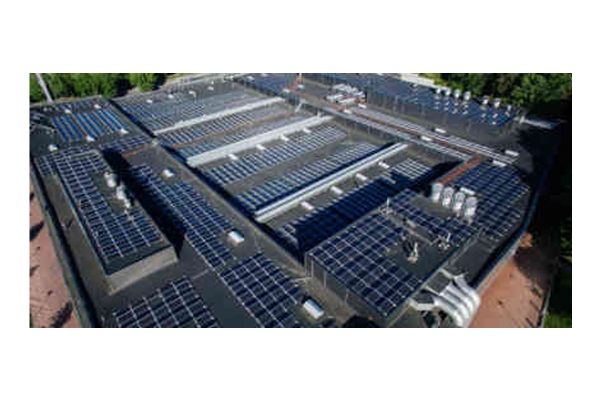
IoT-enabled solutions for local solar energy
Solnet Group is a smart solar solutions provider that offers utility-scale smart solar and energy storage solutions. Solnet helps businesses save energy costs and reduce their carbon footprint by generating clean renewable energy locally, providing power below grid parity. The company takes full responsibility for planning, installing, and operating solar plants. All maintenance, repairs, updates and cloud-based data services are part of the service. The solution features detailed information from utilities so users can buy energy from the grid when demand is at its lowest.
Finland
≈10

Solnet Green Energy Oy
IoT-enabled solutions for local solar energy
Solnet Group is a smart solar solutions provider that offers utility-scale smart solar and energy storage solutions. Solnet helps businesses save energy costs and reduce their carbon footprint by generating clean renewable energy locally, providing power below grid parity. The company takes full responsibility for planning, installing, and operating solar plants. All maintenance, repairs, updates and cloud-based data services are part of the service. The solution features detailed information from utilities so users can buy energy from the grid when demand is at its lowest.
≈10Mt CO2e/year
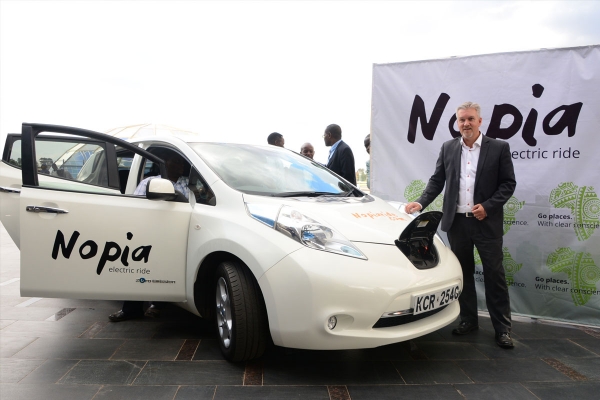
Electric powered taxi services
Ekorent provides a taxi hailing service based on electric vehicles and renewable energy, and is therefore environmentally friendly when the electricity comes from renewable energy sources. The service, called Nopia ride, is intended to be an easy to hail, affordable and 100 % emission-free way to get around. Nopia is now available in Nairobi, Kenya. Their mission is to reduce harmful air-pollution and offer affordable electric rides to everyone.
Finland
≈10

EkoRent
Electric powered taxi services
Ekorent provides a taxi hailing service based on electric vehicles and renewable energy, and is therefore environmentally friendly when the electricity comes from renewable energy sources. The service, called Nopia ride, is intended to be an easy to hail, affordable and 100 % emission-free way to get around. Nopia is now available in Nairobi, Kenya. Their mission is to reduce harmful air-pollution and offer affordable electric rides to everyone.
≈10Mt CO2e/year
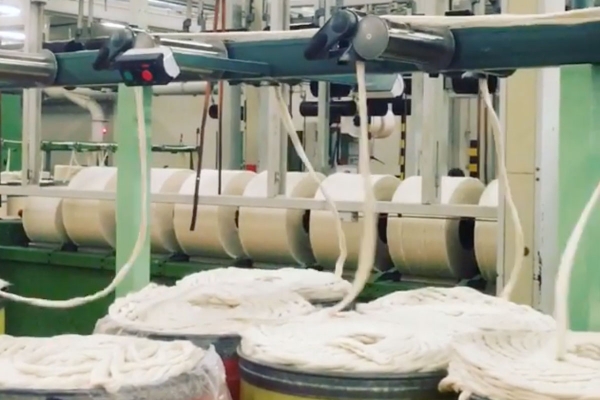
Recycling textile waste into new fibers
As much as 73 % of clothing is landfilled or burnt. Infinited Fiber Company has a goal to revolutionize the fashion world by changing the waste in clothing manufacturing. The company has developed a process technology that can turn textile and paper waste into new fibers for the textile industry. They claim this can be done infinitely without decreasing the quality of the fiber. The technology rids the value chain of carbon disulfide – the most challenging, hazardous, and biologically harmful chemical in the fashion industry. Furthermore, the innovation is also flexible and can be integrated into existing pulp, dissolving pulp and viscose fiber plants.
Finland
≈10

Infinited Fiber Company
Recycling textile waste into new fibers
As much as 73 % of clothing is landfilled or burnt. Infinited Fiber Company has a goal to revolutionize the fashion world by changing the waste in clothing manufacturing. The company has developed a process technology that can turn textile and paper waste into new fibers for the textile industry. They claim this can be done infinitely without decreasing the quality of the fiber. The technology rids the value chain of carbon disulfide – the most challenging, hazardous, and biologically harmful chemical in the fashion industry. Furthermore, the innovation is also flexible and can be integrated into existing pulp, dissolving pulp and viscose fiber plants.
≈10Mt CO2e/year
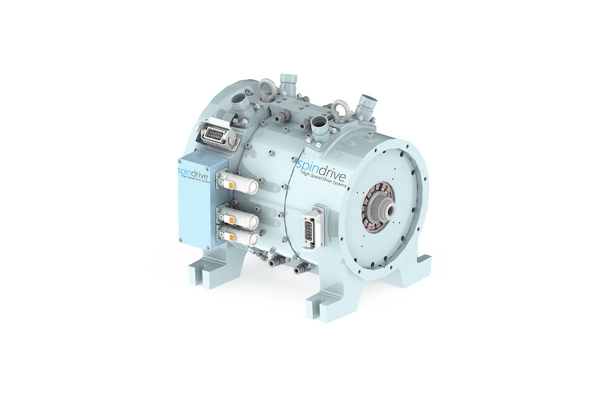
Active magnetic bearings for electrical machines
Around 40% of the electricity worldwide is consumed by rotating electrical machines. However, most of the electrical machines are not working at the optimum point from a process efficiency perspective. SpinDrive's solution claims to lower the customer's lifecycle costs by 35%. The company provides design and prototyping of high-speed electrical drivetrains and serial production of active magnetic bearings. SpinDrive’s solution claims to lower the drivetrain losses by half. They further claim that, for the 500-kW unit operating 8000 hours per year, their solution enables 2-year payback time.
Finland

SpinDrive
Active magnetic bearings for electrical machines
Around 40% of the electricity worldwide is consumed by rotating electrical machines. However, most of the electrical machines are not working at the optimum point from a process efficiency perspective. SpinDrive's solution claims to lower the customer's lifecycle costs by 35%. The company provides design and prototyping of high-speed electrical drivetrains and serial production of active magnetic bearings. SpinDrive’s solution claims to lower the drivetrain losses by half. They further claim that, for the 500-kW unit operating 8000 hours per year, their solution enables 2-year payback time.
Currently unavailable
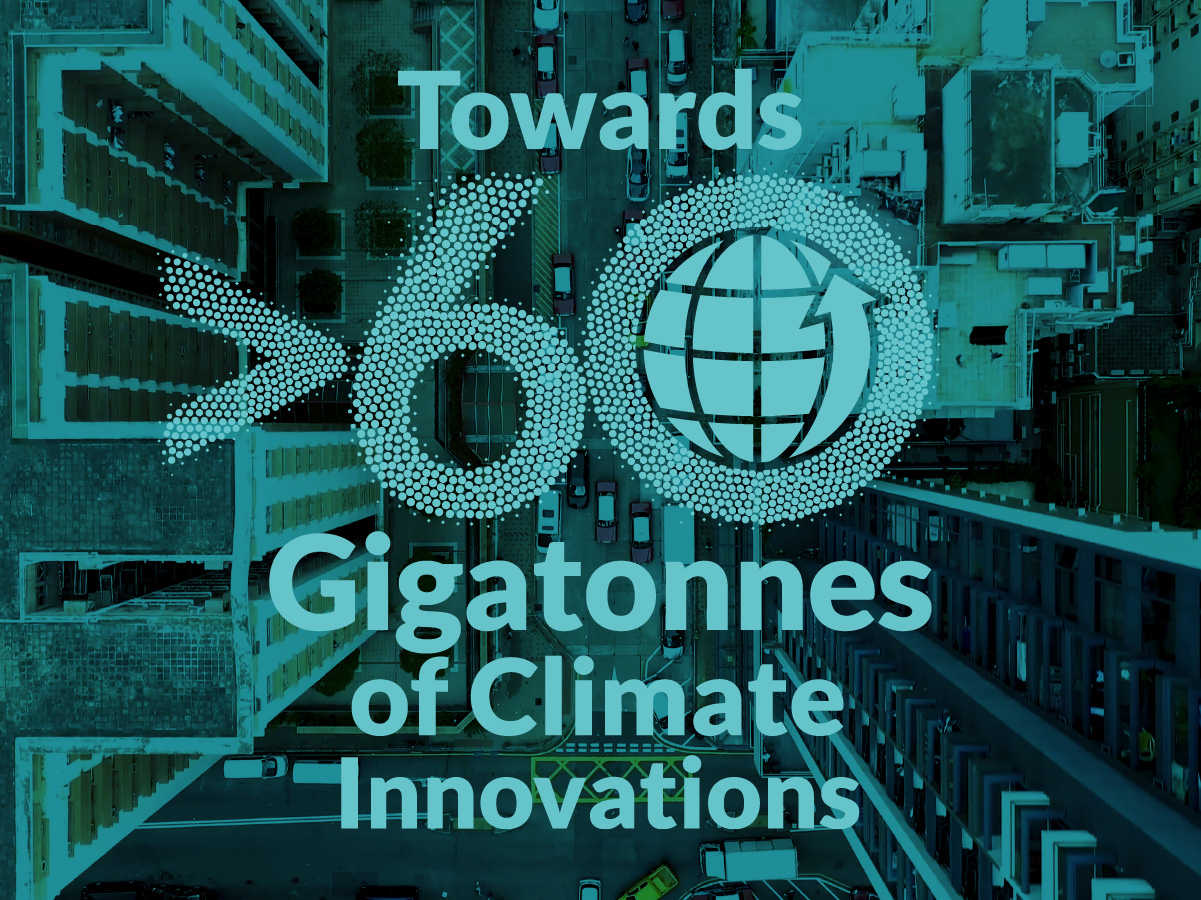
Electrochemical recuperator (ECR) batteries
Electrochemical Recuperator (ECR) represents a new class of batteries, introducing an alternative to existing energy storage technology. ECRs use water-based non-toxic electrolytes, which reduce fire risks and environmental hazards compared to conventional batteries. ECR cells’ manufacturing process has approximately five times lower carbon footprint than conventional Li-Ion batteries, according to the innovator. ECRs are constructed to endure more than 1 million charging cycles without major loss of performance characteristics. ECRs do not use scarce or ethically tainted materials.
Finland

Geyser Batteries
Electrochemical recuperator (ECR) batteries
Electrochemical Recuperator (ECR) represents a new class of batteries, introducing an alternative to existing energy storage technology. ECRs use water-based non-toxic electrolytes, which reduce fire risks and environmental hazards compared to conventional batteries. ECR cells’ manufacturing process has approximately five times lower carbon footprint than conventional Li-Ion batteries, according to the innovator. ECRs are constructed to endure more than 1 million charging cycles without major loss of performance characteristics. ECRs do not use scarce or ethically tainted materials.
Currently unavailable

Deep-well geothermal heating and cooling system
The QHEAT product is a geothermal heating and cooling system, utilizing geothermal heat wells. The innovative part of the solution is the depth of the well, which is around 2000 meters (compared to conventional residential geothermal heating systems that are around 300 meters). The product can provide seasonal energy storage. Several buildings can be connected to one well in a low-temperature energy network, allowing for energy to be exchanged between buildings in the network. The innovation also includes more energy efficient technology compared to conventional geothermal heating for residents. The innovation would replace conventional heating and cooling solutions, based on burning of fossil fuels.
Finland

Quantitative Heat Oy
Deep-well geothermal heating and cooling system
The QHEAT product is a geothermal heating and cooling system, utilizing geothermal heat wells. The innovative part of the solution is the depth of the well, which is around 2000 meters (compared to conventional residential geothermal heating systems that are around 300 meters). The product can provide seasonal energy storage. Several buildings can be connected to one well in a low-temperature energy network, allowing for energy to be exchanged between buildings in the network. The innovation also includes more energy efficient technology compared to conventional geothermal heating for residents. The innovation would replace conventional heating and cooling solutions, based on burning of fossil fuels.
Currently unavailable

Solid oxide system technologies for energy
Solid oxide cells (SOCs) are electrochemical conversion devices that can be operated as fuel cells (SOFCs) that produce electricity, and as electrolysis cells (SOECs) that produce hydrogen. SOFCs can be distinguished by their high operating temperatures which enables them to use a larger number of fuels. The fuel flexibility and modular design of SOFCs make them suitable for a wide range of power applications. SOFCs can run on biogas, hydrogen and even natural gas. When running on renewable biogas or hydrogen, emissions are carbon-neutral and zero-carbon, respectively. When running on natural gas, the carbon dioxide that is generated during the electrochemical process is 50 % less than by other gas-based generators.
Finland

Convion
Solid oxide system technologies for energy
Solid oxide cells (SOCs) are electrochemical conversion devices that can be operated as fuel cells (SOFCs) that produce electricity, and as electrolysis cells (SOECs) that produce hydrogen. SOFCs can be distinguished by their high operating temperatures which enables them to use a larger number of fuels. The fuel flexibility and modular design of SOFCs make them suitable for a wide range of power applications. SOFCs can run on biogas, hydrogen and even natural gas. When running on renewable biogas or hydrogen, emissions are carbon-neutral and zero-carbon, respectively. When running on natural gas, the carbon dioxide that is generated during the electrochemical process is 50 % less than by other gas-based generators.
Currently unavailable

Electric vehicle charging infrastructure
The Parking Energy innovation is a cable system that can be installed at existing parking infrastructure to enable EV charging capabilities. Large residential and office parking stations can be retrofitted to meet the needs of the growing EV fleet. The business is built around the charging as-a-service model, which is further made possible by allowing various types of charging stations to be installed rather than a singular coupling. The innovation can reduce emissions in urban areas by enabling the procurement of electromobility options.
Finland

Parkkisähkö Oy
Electric vehicle charging infrastructure
The Parking Energy innovation is a cable system that can be installed at existing parking infrastructure to enable EV charging capabilities. Large residential and office parking stations can be retrofitted to meet the needs of the growing EV fleet. The business is built around the charging as-a-service model, which is further made possible by allowing various types of charging stations to be installed rather than a singular coupling. The innovation can reduce emissions in urban areas by enabling the procurement of electromobility options.
Currently unavailable

Merus UPQ medium-voltage microgrid
Merus Uninterrupted Power Quality (UPQ) Microgrid is smart grid control solution to increase efficiency in medium voltage electricity grids. It combines power quality improving technology with energy storage, controlling renewable generation forms and flexible loads within a microgrid. It also reduces stress on bottlenecks of distribution networks, thereby minimizing technical losses in electricity distribution. The increased power factor for industries using medium voltage electricity ultimately leads to reduced need for electricity production.
Finland

Merus Power
Merus UPQ medium-voltage microgrid
Merus Uninterrupted Power Quality (UPQ) Microgrid is smart grid control solution to increase efficiency in medium voltage electricity grids. It combines power quality improving technology with energy storage, controlling renewable generation forms and flexible loads within a microgrid. It also reduces stress on bottlenecks of distribution networks, thereby minimizing technical losses in electricity distribution. The increased power factor for industries using medium voltage electricity ultimately leads to reduced need for electricity production.
Currently unavailable